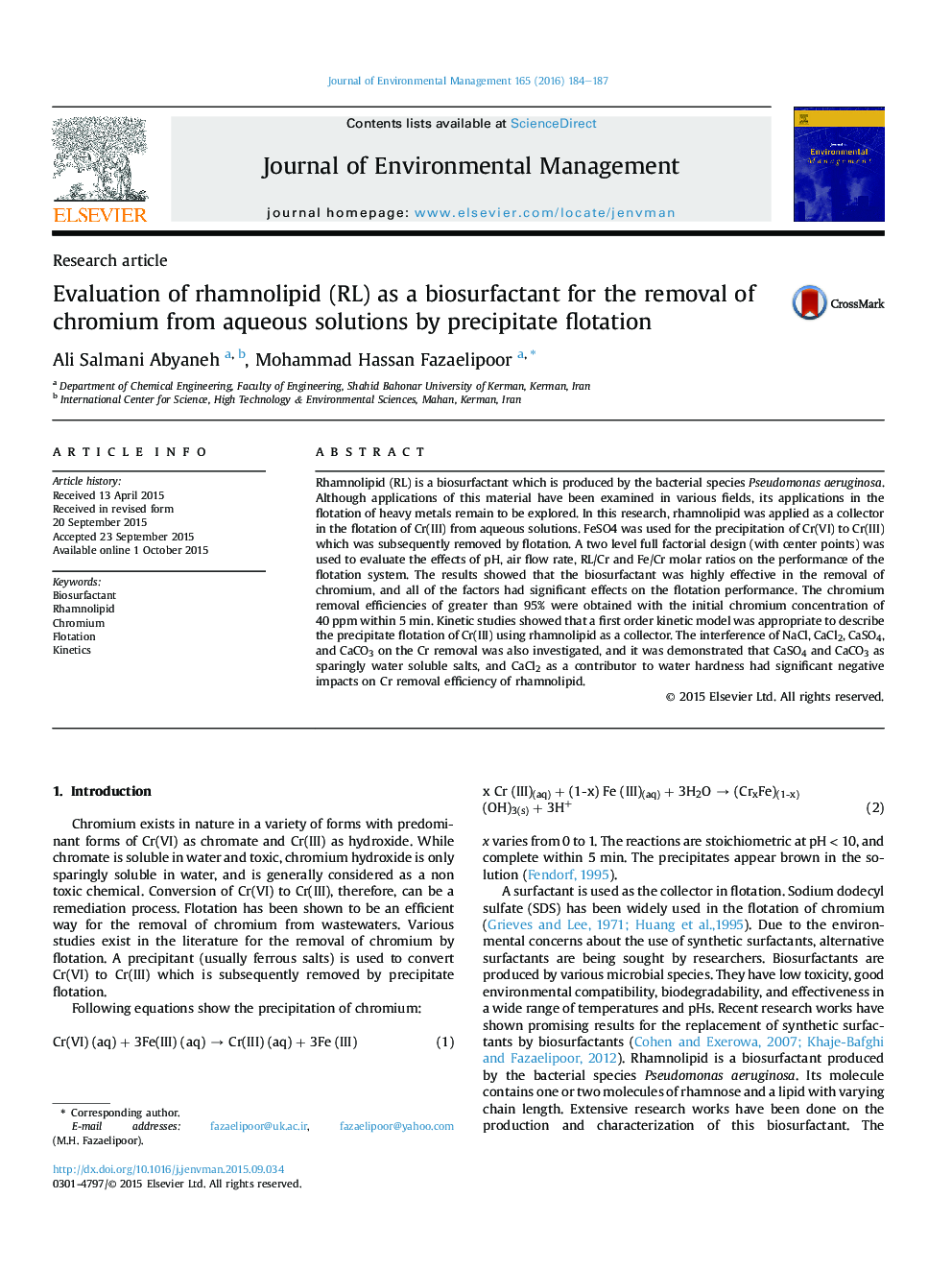| کد مقاله | کد نشریه | سال انتشار | مقاله انگلیسی | نسخه تمام متن |
|---|---|---|---|---|
| 1055488 | 1485247 | 2016 | 4 صفحه PDF | دانلود رایگان |
• Rhamnolipid was applied in flotation, for the removal of Cr(VI) from water.
• Up to 95% Cr(VI) removal was achieved for the initial concentration of 40 ppm.
• A first order kinetic model described the flotation of Cr(VI) appropriately.
• divalent ions affected negatively the removal of Cr(VI).
Rhamnolipid (RL) is a biosurfactant which is produced by the bacterial species Pseudomonas aeruginosa. Although applications of this material have been examined in various fields, its applications in the flotation of heavy metals remain to be explored. In this research, rhamnolipid was applied as a collector in the flotation of Cr(III) from aqueous solutions. FeSO4 was used for the precipitation of Cr(VI) to Cr(III) which was subsequently removed by flotation. A two level full factorial design (with center points) was used to evaluate the effects of pH, air flow rate, RL/Cr and Fe/Cr molar ratios on the performance of the flotation system. The results showed that the biosurfactant was highly effective in the removal of chromium, and all of the factors had significant effects on the flotation performance. The chromium removal efficiencies of greater than 95% were obtained with the initial chromium concentration of 40 ppm within 5 min. Kinetic studies showed that a first order kinetic model was appropriate to describe the precipitate flotation of Cr(III) using rhamnolipid as a collector. The interference of NaCl, CaCl2, CaSO4, and CaCO3 on the Cr removal was also investigated, and it was demonstrated that CaSO4 and CaCO3 as sparingly water soluble salts, and CaCl2 as a contributor to water hardness had significant negative impacts on Cr removal efficiency of rhamnolipid.
Journal: Journal of Environmental Management - Volume 165, 1 January 2016, Pages 184–187
